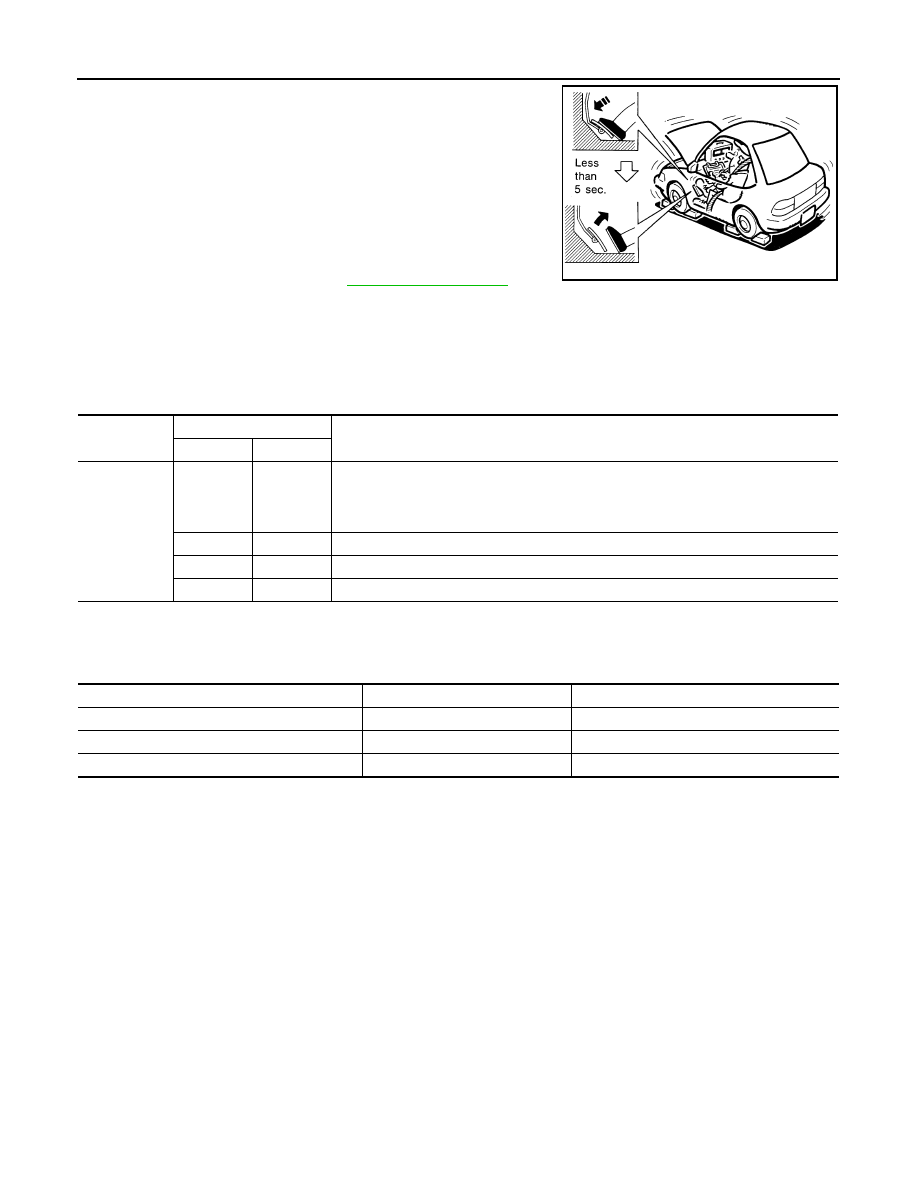Nissan Titan A60. Manual - part 947

TM-176
< PERIODIC MAINTENANCE >
STALL TEST
4. Engine start, apply foot brake, and place selector lever in “D”
position.
5. While holding down the foot brake, gradually press down the
accelerator pedal.
6. Quickly read off the stall speed, then quickly remove your foot
from the accelerator pedal.
CAUTION:
Do not hold down the accelerator pedal for more than 5 sec-
onds during this test.
7. Move the selector lever to the “N” position.
8. Cool down the ATF.
CAUTION:
Run the engine at idle for at least one minute.
Judgment of Stall Test
O: Stall speed within standard value position
H: Stall speed higher than standard value
L: Stall speed lower than standard value
Stall test standard value position
Stall speed
: Refer to
.
SAT514G
Selector lever position
Expected problem location
D
R
Stall rotation
H
O
• Forward brake
• Forward one-way clutch
• 1st one-way clutch
• 3rd one-way clutch
O
H
• Reverse brake
L
L
• Engine and torque converter one-way clutch
H
H
• Line pressure low
Does not shift-up D position 1
→ 2
Slipping in 2GR, 3GR, 4GR
Direct clutch slippage
Does not shift-up D position 2
→ 3
Slipping in 3GR, 4GR, 5GR
High and low reverse clutch slippage
Does not shift-up D position 3
→ 4
Slipping in 4GR, 5GR
Input clutch slippage
Does not shift-up D position 4
→ 5
Slipping in 5GR
Front brake slippage